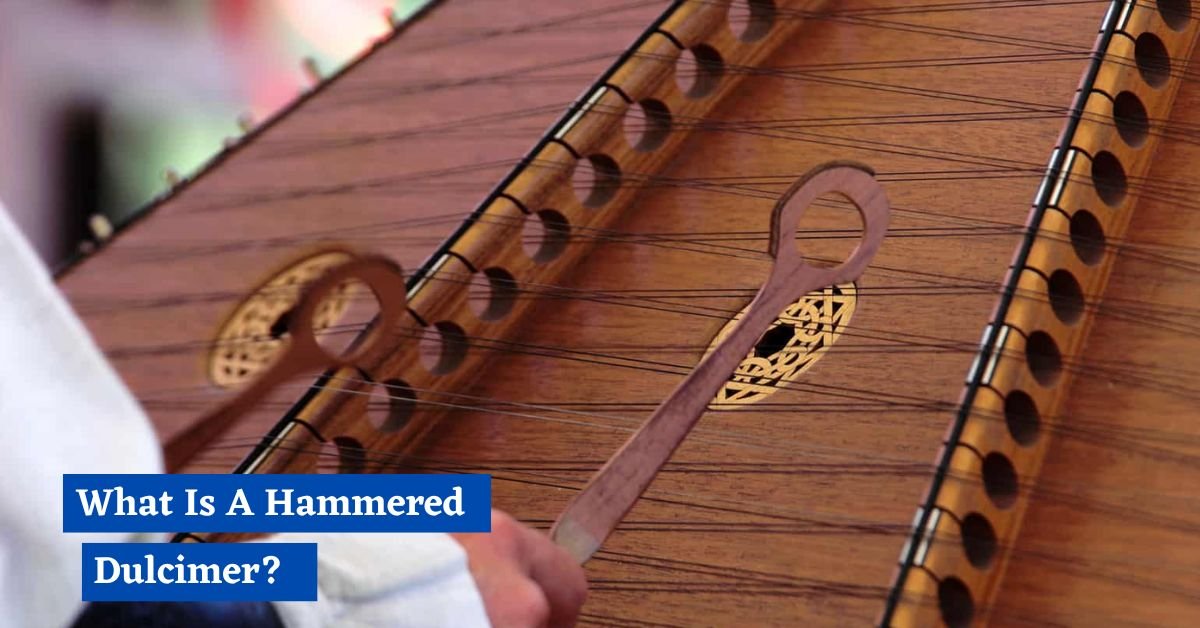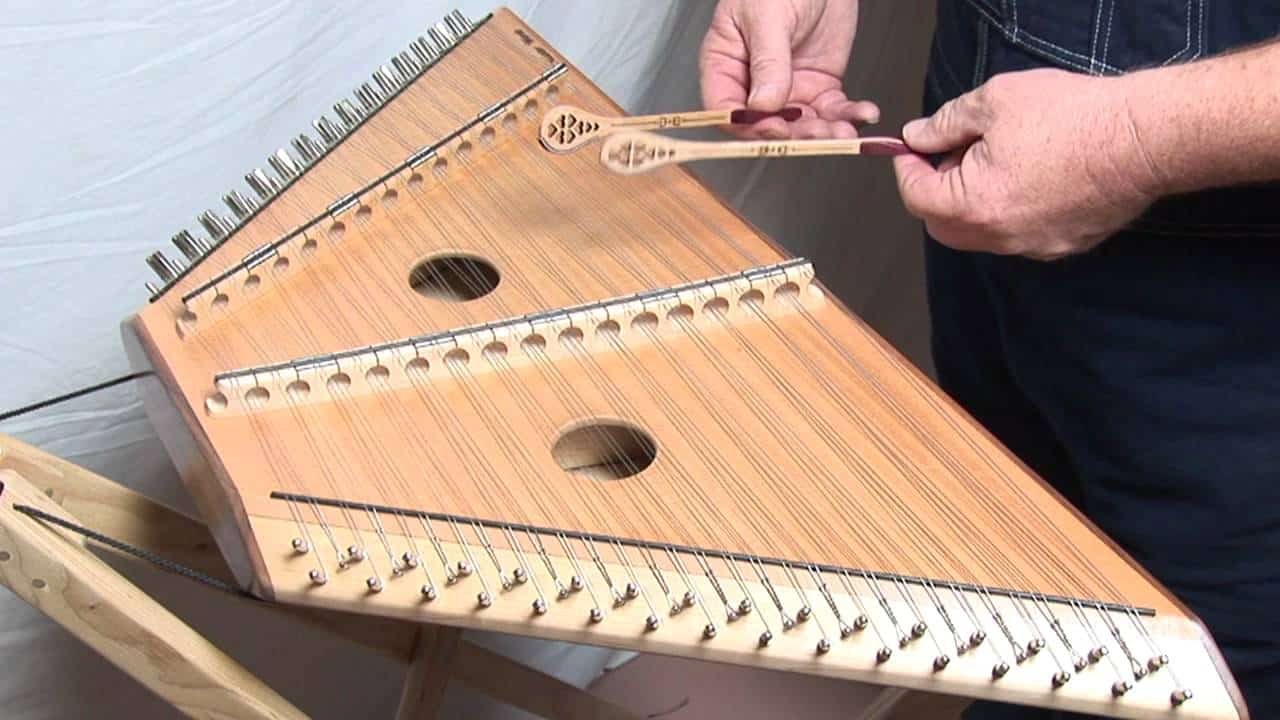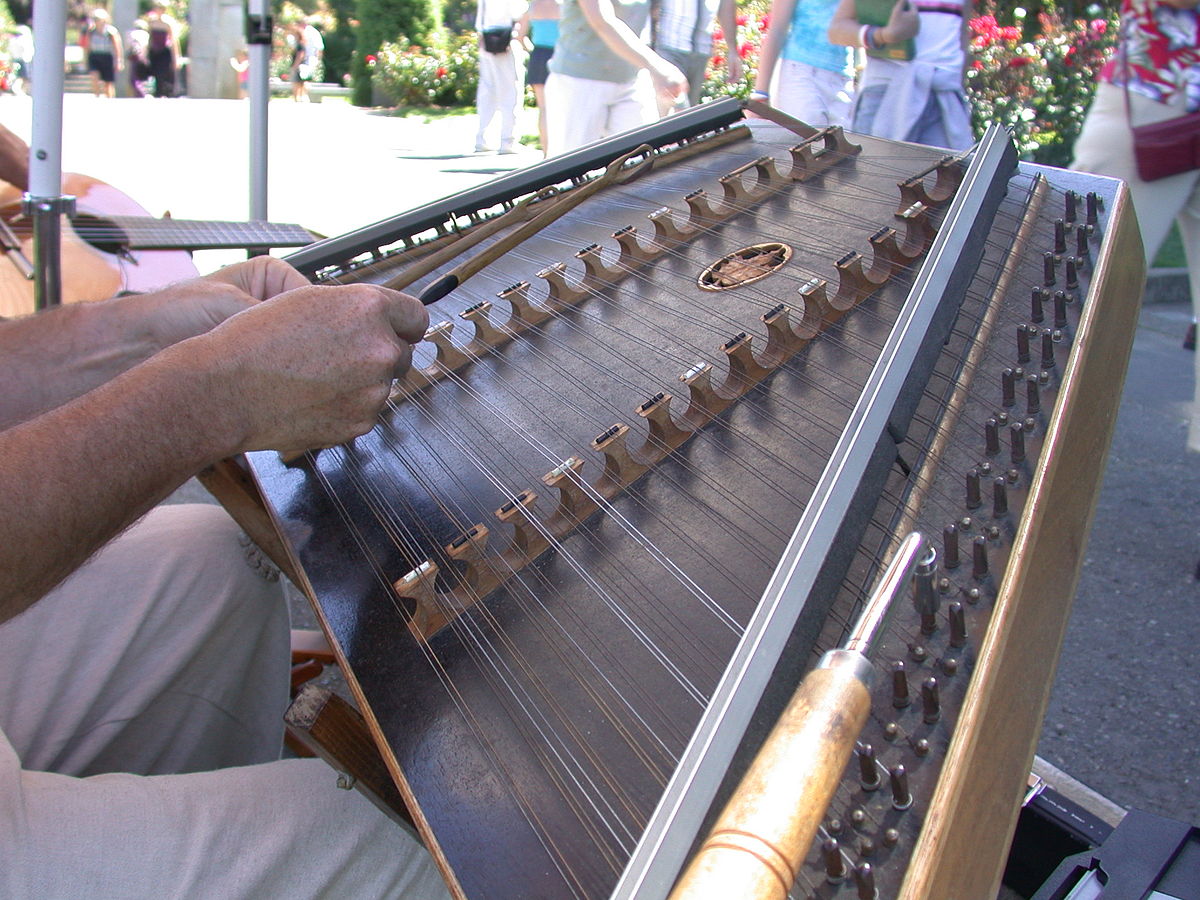Physical Address
304 North Cardinal St.
Dorchester Center, MA 02124
Physical Address
304 North Cardinal St.
Dorchester Center, MA 02124


What Is A Hammered Dulcimer: A hammered dulcimer is a stringed musical instrument consisting of a trapezoidal soundboard and strings that are struck with small hammers, producing a rich and resonant sound.
The hammered dulcimer has a long and rich history that can be traced back to ancient times. Believed to have originated in the Middle East and Asia, it gradually made its way to Europe and the Americas. Initially known as the santur or the yangqin, the instrument underwent several transformations before evolving into the modern hammered dulcimer we know today.

A typical hammered dulcimer features:
The hammered dulcimer is a stringed instrument consisting of a trapezoidal soundboard and strings that are struck with small hammers, also known as dulcimers or beaters. The strings are stretched across the soundboard, with each string producing a specific pitch when struck. The instrument is typically made from wood, with variations in size and shape based on different regional traditions.
Musicians hold a hammer in each hand, striking the strings to produce notes. Techniques include:
Mastery involves precise control over dynamics, rhythm, and expression, allowing for both melodic and harmonic play.
Playing the hammered dulcimer requires a unique skill set that combines elements of both string and percussion instruments. The musician strikes the strings with the hammers to produce sound, utilizing different techniques such as damping, trilling, and rolling. The artistry of playing the hammered dulcimer lies in the player’s ability to control dynamics, sustain, and create melodic and harmonic variations.
Proper tuning and maintenance are vital for optimal performance:
The hammered dulcimer family includes several variants adapted to different cultures:
Each variant reflects the unique musical traditions and craftsmanship of its region.
The hammered dulcimer has a versatile repertoire that spans various genres and musical styles. Traditionally associated with folk music, the instrument has found its place in contemporary and classical music as well. From lively jigs and reels to hauntingly beautiful ballads, the hammered dulcimer adds a distinct charm to any musical composition.
While the hammered dulcimer has deep roots in traditional music, it has also found its way into modern contexts. Many artists and bands incorporate the instrument into their performances, bringing a unique and enchanting element to their sound. From traditional folk musicians like Maggie Sansone and Simon Chrisman to contemporary artists like Joanna Newsom, the hammered dulcimer continues to inspire and captivate listeners.

The hammered dulcimer is used primarily as a musical instrument for both solo and ensemble performances. It has been traditionally employed in various folk music genres, adding a distinctive and enchanting sound to the compositions.
However, it has also found its way into contemporary and classical music, expanding its range of uses. Its versatile nature allows it to be featured in concerts, recordings, studio sessions, and even in film soundtracks, bringing a unique and captivating element to the music.
For beginners, there are numerous resources available to learn the hammered dulcimer:
Engaging with the hammered dulcimer community through online forums and social media groups can also provide support and inspiration for new learners.
The main difference between a hammered dulcimer and a dulcimer lies in their playing techniques. While both instruments have strings, the dulcimer is played by plucking or strumming the strings with the fingers or a pick.
On the other hand, the hammered dulcimer is played by striking the strings with small hammers, also known as dulcimers or beaters. This distinction in playing techniques gives each instrument its distinct sound and character, with the hammered dulcimer producing a more percussive and resonant tone.
The hammered dulcimer is a stringed instrument characterized by its trapezoidal soundboard and strings that are struck with hammers. It typically features multiple strings arranged in courses, with each course producing a specific pitch when struck.

The soundboard, often made of wood, resonates and amplifies the vibrations of the strings, creating a rich and vibrant sound. The instrument is also equipped with bridges and dampers to control the sustain and timbre of the notes. Its elegant design and intricate craftsmanship make it a visually appealing instrument in addition to its melodic capabilities.
The hammered dulcimer is primarily made of wood, with variations in the specific types of wood used depending on regional traditions and personal preferences of the instrument maker. The soundboard, which is responsible for amplifying the sound, is usually crafted from a hardwood such as spruce or maple.
The frame and sides of the instrument can be constructed from a variety of woods, including cherry, walnut, or mahogany. The strings of the hammered dulcimer are typically made of steel or brass. The combination of these materials and the skillful craftsmanship contribute to the instrument’s durability, tonal qualities, and overall aesthetic appeal.
The hammered dulcimer holds a special place in many cultural traditions. In the Appalachian region of the United States, it is a key instrument in traditional folk music. Similarly, in Hungary and Romania, the cimbalom is a central feature of classical and folk performances. Across Asia and the Middle East, its variants play significant roles in traditional ceremonies and celebrations.
It is important to distinguish the hammered dulcimer from the Appalachian dulcimer, a plucked string instrument. While both share the term “dulcimer,” they differ significantly in construction, playing techniques, and sound production. The hammered dulcimer is a percussive instrument, whereas the Appalachian dulcimer is played by strumming or plucking.
Is the hammered dulcimer difficult to learn?
Like any musical instrument, learning the hammered dulcimer requires time, dedication, and practice. While it may seem intimidating at first, with proper guidance and persistence, one can acquire the necessary skills to play this instrument effectively.
Can I play different genres of music on the hammered dulcimer?
Absolutely! The hammered dulcimer’s versatility allows for playing a wide range of genres, including folk, classical, contemporary, and even experimental music. Its unique sound can add a distinct flavor to various musical styles.
Do I need any musical background to play the hammered dulcimer?
While having some musical background can be beneficial, it is not a prerequisite to learning the hammered dulcimer. With the right resources, lessons, and practice, anyone with a passion for music can begin their journey with this captivating instrument.
The hammered dulcimer holds a significant place in the world of music, blending history, craftsmanship, and captivating sound. Its melodic resonance has enchanted listeners across cultures and centuries.
Whether played in traditional folk settings or incorporated into contemporary compositions, the hammered dulcimer continues to inspire and evoke a sense of wonder. By exploring its origins, construction, playing techniques, repertoire, and notable artists, we can deepen our understanding and appreciation of this magical instrument. So, let the dulcet tones of the hammered dulcimer carry you away to a world of musical enchantment.